Vijayanagar
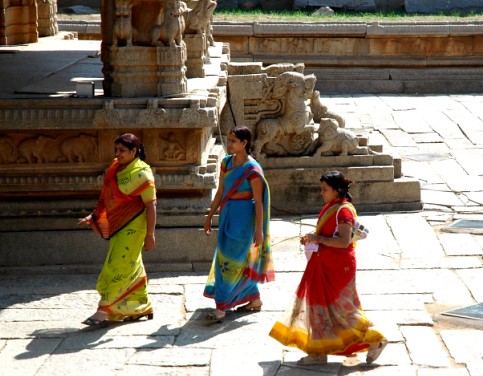
The magical boulder-strewn landscape on the banks of the Tungabhadra hosts one of the largest open-air museums of the world and a UNESCO World Heritage Site – the 600-year-old ruins of the last great Hindu kingdom – Vijayanagar -- which for two centuries resisted the Islamic conquest of South India.
Vijayanagar – Victory City – was founded around 1336 by Hakka and Bukka, two brothers from the Sangama-Kuruba clan.One version of the founding myth says they were abducted in their youth by the Sultan Muhhamad bin Tughluq, who, after defeating the king of Warangal took Hakka and Bukka as prisoners of war to Delhi, where they were converted to Islam by force. The brothers escaped vowing to preserve Hindu culture and heritage deep in a Southern stronghold, and, under the guidance of the sage Vidyaranya founded the Vijayanagar Kingdom from amongst the remnants of the Hoysala kingdom.
That Hakka and Bukka hailed were legitimate successors to the old Hoysala sovereignty by some organic process is supported by other evidence – they became overlords of the entire communities formerly ruled by the Hoysalas without any clash for the transfer of power; they followed the Hoysala framework in all political and administrative matters; etc. According to another story, Muhammad bin Tughluq made one Harihara, son of Sangama, who was previously a notable of Anegondi, his governor there; the dynasty sprung from this grant. Yet another version states that the brahmin Vidyaranya himself founded Vijayanagar after the discovery of a hidden treasure, ruled over it himself, and left it upon his death to a Kuruba family who established the first regular dynasty. And so on.
The power of Vijayanagar maxed under Krishna Deva Raya (1509-29), who controlled nearly the whole of peninsular India south of the Krishna and Tungabhadra rivers. The capital was comparable to Delhi in size and prestige with an estimated population of half a million, deriving its revenues from control of the southern spice and cotton trade. Its busy bazaars were described by European travelers as centers of international commerce. Vijayanagar’s gold coins were current in an arc from Arabia to Indonesia. It ‘seemed to me as large as Rome, and very beautiful’, wrote a Portugese visitor of the capital.
[The] king is of medium height, and of fair complexion and good figure, rather fat than thin; he has on his face signs of small-pox. He is the most feared and perfect king that could possibly be, cheerful of disposition and very merry; he is one that seeks to honor foreigners, and receives them kindly, asking about all their affairs, whatever their condition may be. He is a great ruler and a man of much justice, but subject to sudden fits of rage, and this is his title ‘Crisnarao Macacao, king of kings, lord of the greater lords of India, lord of the three seas and of the land.’ He has this title because by rank he is a greater lord than any by reason of what he possesses … but it seems that (in fact) he has nothing compared to what a man like him ought to have, so gallant and perfect he is in all things.
(Domingo Paes quoted in Noboru Karashima, Towards a New Formation: South Indian Society under Vijaynagar Rule.)
The impact of the Portugese pirates like Vasco da Gama caused a great upheaval in the economics of maritime commerce of spice and cotton, and this impacted the revenues of Vijaynagar. The last king, Rama Raya, tried to divide and manipulate his neighbors, the Deccani Sultanates, to only temporary avail and considerable backfiring. They finally banded together and the forces of Vijayanagar lost the battle of Talikota in 1565 against a confederacy of Berar, Bidar, Bijapur, Ahmednagar and Golconda. The king was beheaded; his city was sacked and left in ruins.
The loss of Vijayanagar resulted in the opening up of southern India for Muslim conquest and its fracturing into smaller states – Mysore was one – that were at constant internecine war with each other, leading ultimately to a successful divide-and-conquer by the British.
The major temples are dedicated to Virupaksha and Vitthala; there are shrines to Pampa and Bhuvaneshwari, statues of Ugra-Narasimha, Nandi and Ganesh; the Hazara-rama temple; the hilltop village of Anegondi across the river, the birthplace of Hanuman and the nearby site where he is supposed to have kept Sita’s jewels for safekeeping; Bali’s funeral pyre; and about 80 other sites maintained by the Archaeological Survey of India.
Above: Boulders and Temples by the Tungabhadra; Woman and Coracle; Cormorant Sunning; Virupaksha Temple; Vitthala Temple; Vitthala Temple pillars; Vitthala temple at night; Vitthala Temple at night (2); Vitthala temple detail; Vitthala Temple Visitors.
Below: The famous Hampi Rath (Chariot); the outer wall of the Hazara-rama Temple; Hemakuta Temple Complex (1); Hemakuta Temple Complex (2); Lotus Mahal ceiling; Elephants' Stables; Parrots on the walls of the Royal Enclosure; Cart selling Sindoor and Puja supplies; Banana Seller outside Virupaksha Temple; Ugra Narasimha statue; Gypsy woman; Mobbing the Ice-cream man.
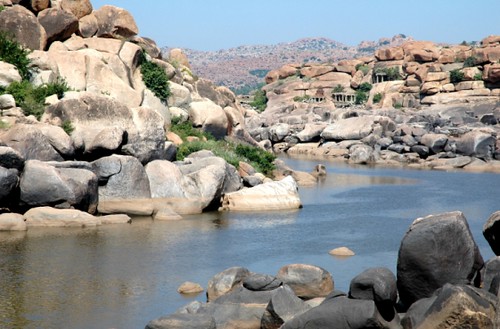
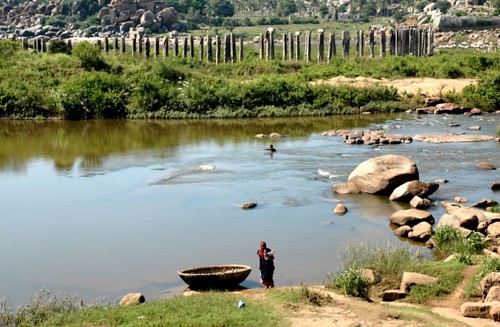
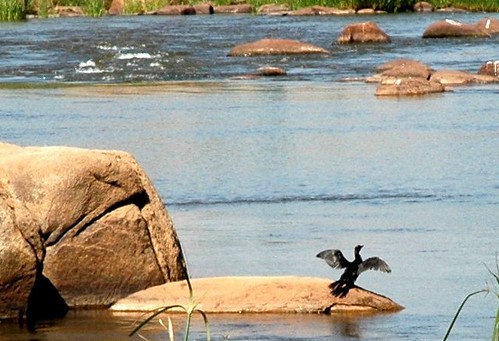
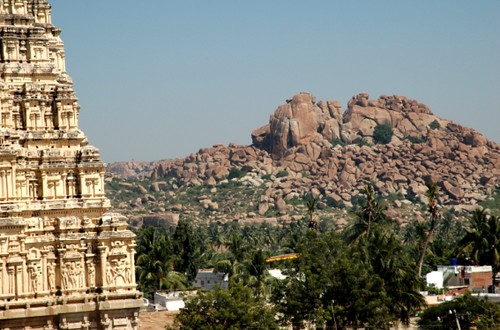
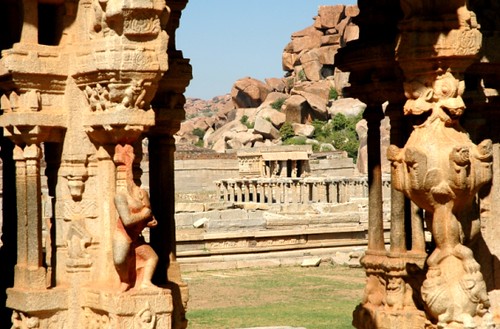
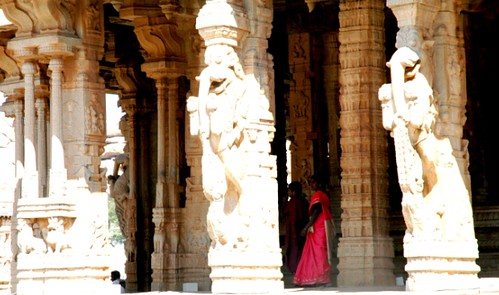




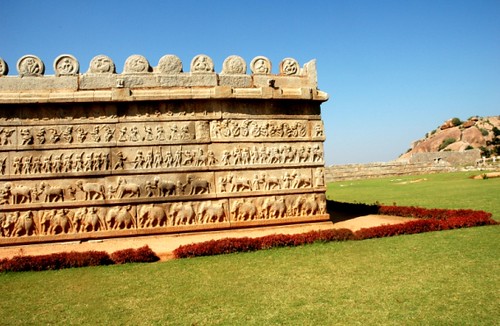
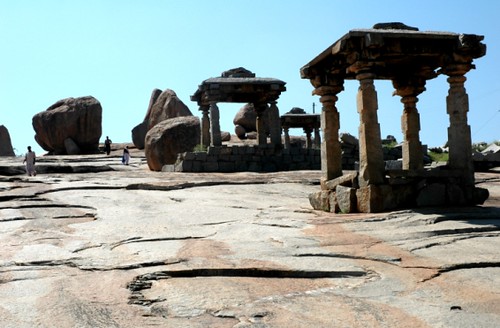
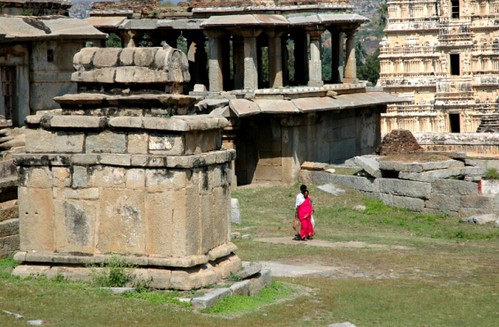
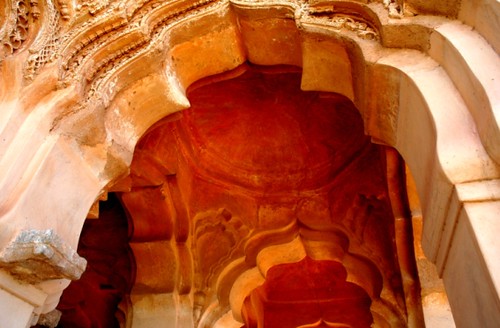

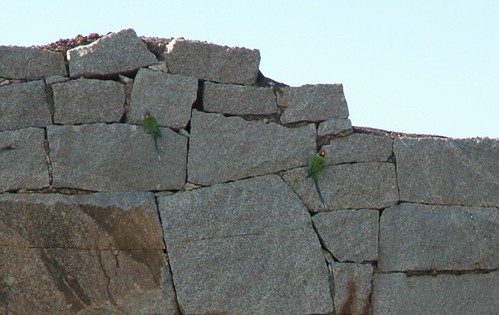
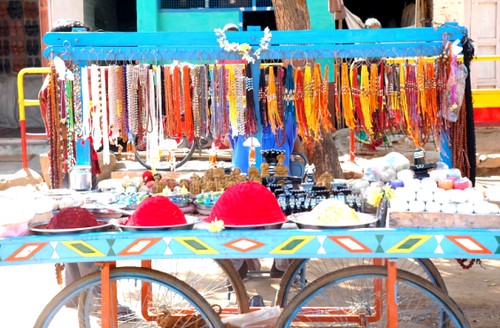
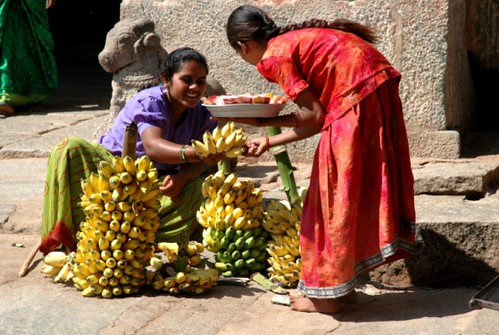
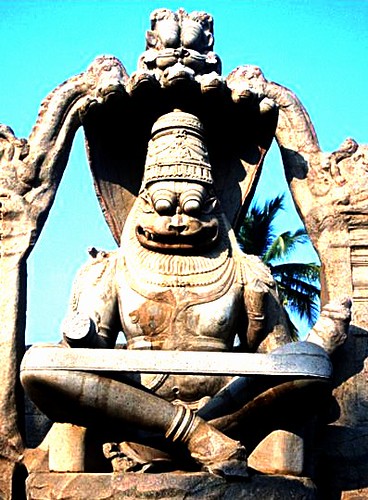
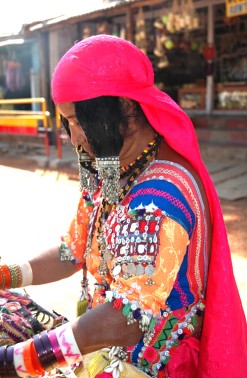
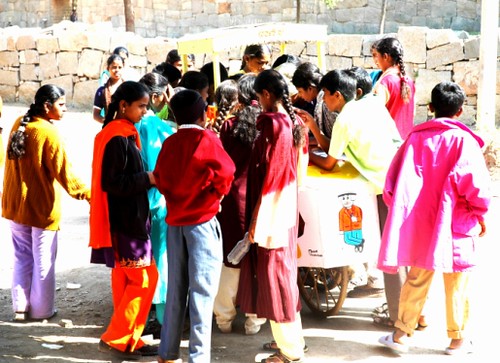


1 Comments:
The site is in general in good conservation state. The Vitthala temple has been aggressively restored, and I came away a little concerned if the new stone pillars being carved to prop up the ceiling were interfering with the original design-scheme. This aspect of restoration which also becomes re-creation is of course not limited to Hampi, but looking at the Ugra Narasimha statue, which now has a gymnastic band around its knees to prevent the legs from separating, one gets a very different impression from the original intent of the creators.
Also, it is one of the sports of the Indian tourists to tap (in some cases bang on) the musical pillars of the temple to make them ring out. The more musical of the pillars are already dark with grease and sweat from many hands and security guards on site seem to be unable or unwilling to stop it.
But compared to many of the Heritage Sites I have seen (say Angkor), this one is clean, without too much tourist load or commercial activity, and looks to last at least several more decades, barring earthquakes or tsunamis!
Post a Comment
<< Home